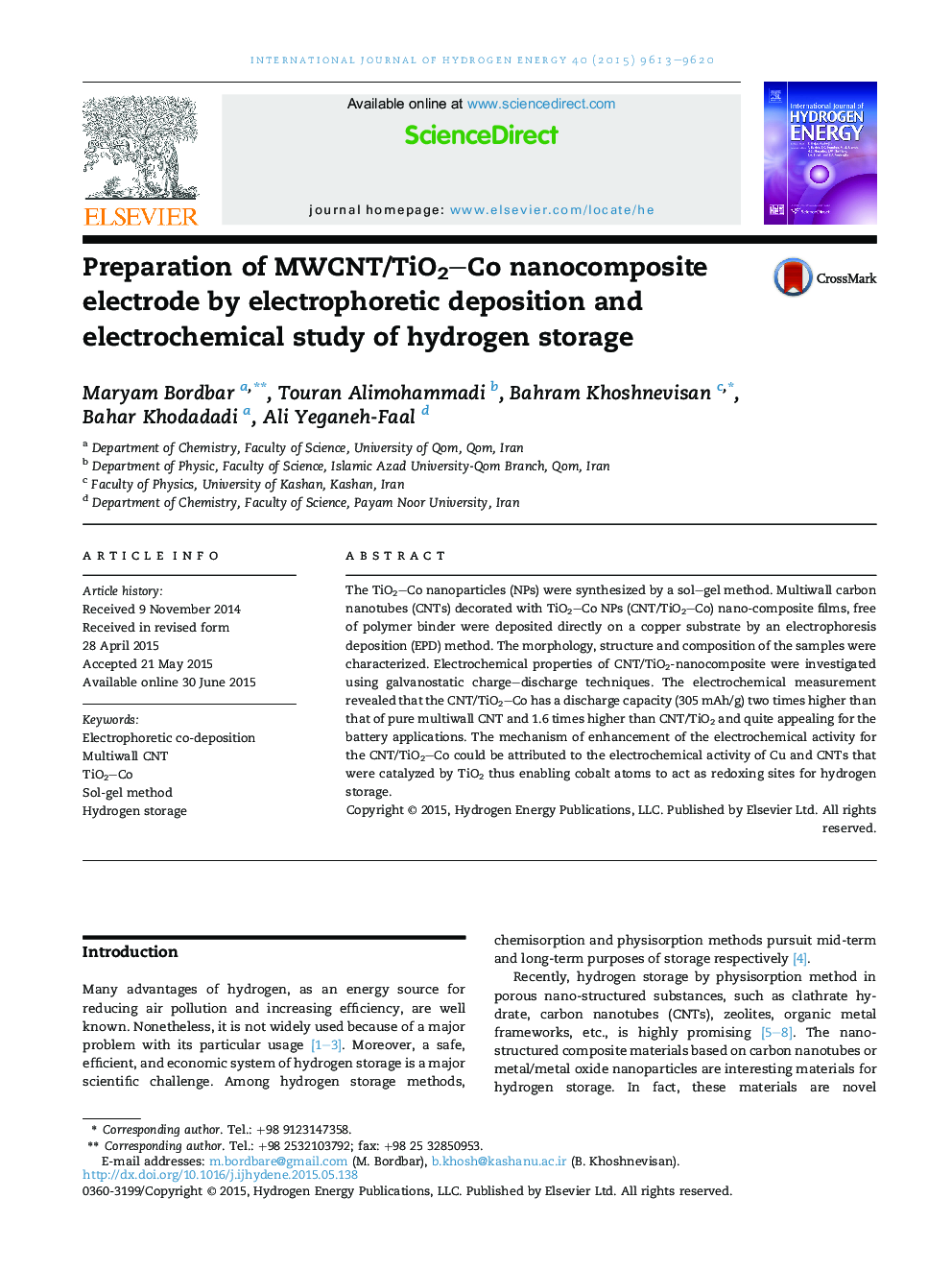| Article ID | Journal | Published Year | Pages | File Type |
|---|---|---|---|---|
| 1274855 | International Journal of Hydrogen Energy | 2015 | 8 Pages |
•State of the art in the production of hydrogen absorbing nano-composites.•Production of MWCNTs and TiO2–Co NPs deposited on a Cu substrate using EPD.•Characterization by XRD, SEM + EDAX, FTIR and UV–Vis spectra.•Total H2 absorption is measured by galvanostatic technique with a considerable margin.•Details of role of the Co catalyst on decomposition of H2 and migrate and bonding of H ions on C atoms.
The TiO2–Co nanoparticles (NPs) were synthesized by a sol–gel method. Multiwall carbon nanotubes (CNTs) decorated with TiO2–Co NPs (CNT/TiO2–Co) nano-composite films, free of polymer binder were deposited directly on a copper substrate by an electrophoresis deposition (EPD) method. The morphology, structure and composition of the samples were characterized. Electrochemical properties of CNT/TiO2-nanocomposite were investigated using galvanostatic charge–discharge techniques. The electrochemical measurement revealed that the CNT/TiO2–Co has a discharge capacity (305 mAh/g) two times higher than that of pure multiwall CNT and 1.6 times higher than CNT/TiO2 and quite appealing for the battery applications. The mechanism of enhancement of the electrochemical activity for the CNT/TiO2–Co could be attributed to the electrochemical activity of Cu and CNTs that were catalyzed by TiO2 thus enabling cobalt atoms to act as redoxing sites for hydrogen storage.
